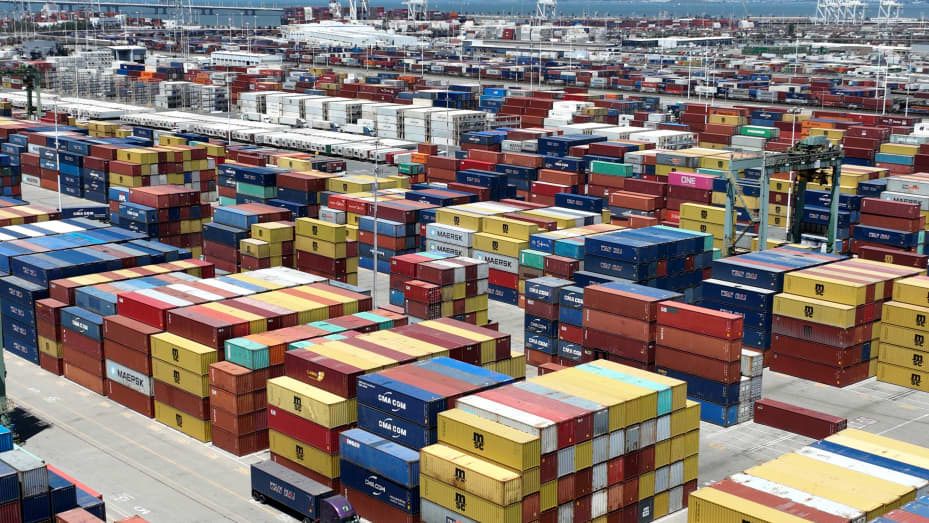Curriculum
- 8 Sections
- 135 Lessons
- 2 Weeks
- Mod 1 Logistics Basics38
- 2.0Welcome to Unilink
- 2.1Rules of Training
- 2.2Party Logistics
- 2.3What is a freight broker?
- 2.4How we do it
- 2.5Unilink’s Departments
- 2.6Operations Team Structure
- 2.7We Do The Right Thing
- 2.8Business Etiquette
- 2.97 Commandments of Unilink Transportation
- 2.10Transportation Terms
- 2.11Geography: Abbreviations
- 2.12Regions
- 2.13Time zones
- 2.14JEOPARDY!
- 2.15Key Stakeholders of the Operation
- 2.16Types of Drivers
- 2.17Commodity
- 2.18Hazmat
- 2.19Load Securement
- 2.20Modes of Transportation: OTR, Air, Ocean, Rail (intermodal)
- 2.21Ocean Freight
- 2.22Air Freight
- 2.23Rail Freight
- 2.24Over the Road
- 2.25Types of Trucks
- 2.26Types of trailers
- 2.27Federal Law Controls – Weights and Axle Loads
- 2.28BOL
- 2.29Rate Confirmation
- 2.30Accessorial Fees
- 2.31Accessorial Fees: Detention, Max Detention, & Layover
- 2.32Detention, Max Detention, & Layover
- 2.33Detention, Max Detention, & Layover test2 Questions
- 2.34Accessorial Fees: Fuel Surcharges
- 2.35Accessorial Fees: TONU
- 2.36Contractual Freight VS Spot Freight
- 2.38Evaluation 128 Questions
- MOD 2 Safety21
- 3.0Introduction.- Facts about Safety
- 3.1Who regulates trucking and brokerage companies in the US?
- 3.2DOT and MC Number
- 3.3Common and Contract carriers
- 3.4Carriers VS Brokers
- 3.5Double Brokering
- 3.6Ratings
- 3.7The Seven BASICs
- 3.8FMCSA Categories: Unsafe Driving
- 3.9FMCSA Categories: Crash Indicator
- 3.10FMCSA Categories: Hours-of-Service (HOS) Compliance
- 3.11FMCSA Categories: Vehicle Maintenance
- 3.12FMCSA Categories: Controlled Substances/ Alcohol
- 3.13FMCSA Categories: Hazardous Materials (HM) Compliance
- 3.14FMCSA Categories: Driver Fitness
- 3.15Reading BASICs
- 3.16Weigh Stations / “Scale” Highway Inspection Site
- 3.17DOT Inspection Week
- 3.18Carrier Packet
- 3.19Insurance
- 3.21Evaluation 230 Minutes24 Questions
- MOD 3 Admin Basic Knowledge12
- 4.0What is Admin?
- 4.1AP & AR
- 4.2BOL VS POD
- 4.3POD and Accounts Payable
- 4.4Types of rates: Flat, Rate Per Mile, Linehaul + Fuel
- 4.5Review: Detention
- 4.6Difference between Detention and layover
- 4.7Settlement & Statements
- 4.8Credit and Types of credit
- 4.9What is a Factoring Company?
- 4.10Common mistakes and how to avoid them
- 4.11Mod 3 Evaluation45 Minutes26 Questions
- Mod 4 Operations13
- MOD 5 Tools18
- 6.0What is a TMS?
- 6.1Carrier411
- 6.2When to use Carrier411
- 6.3How to navigate
- 6.4What is a FreightGuard report?
- 6.5Load Boards
- 6.6DAT
- 6.7A Match in DAT
- 6.8DAT Activity
- 6.9Posting on DAT
- 6.10Rateview
- 6.11Internet Truck Stop (ITS)
- 6.12When to use ITS
- 6.13Posting on Truckstop
- 6.14C4 Cargochief
- 6.15When to use C4
- 6.16How to navigate C4
- 6.17Mod 5 Evaluation10 Minutes9 Questions
- Mod 6 Advanced Ops15
- 7.0Backhaul and Headhaul
- 7.1Deadhead and Bobtail
- 7.2Power Only and Loadouts
- 7.3Seasonality
- 7.4Weight
- 7.5Carrier Procurement for Contractual Operations
- 7.6Vetting carriers when procuring them
- 7.7Negotiating Strategies that Work!
- 7.8Main questions to ask a carrier
- 7.9Proactive Tracking
- 7.10Sending Emails
- 7.11Macropoint Tracking
- 7.12Calling a driver
- 7.13Starting Our Day
- 7.14Mod 6 Evaluation15 Minutes12 Questions
- Border Crossing8
- McLeod18
- 8.0What is McLeod
- 8.1Brokerage Planning
- 8.2Reading the Brokerage Planning Board
- 8.3Opening a load
- 8.4Order Entry
- 8.5Order – General
- 8.6Order – Stops
- 8.7Order – Rating
- 8.8Order – History
- 8.9Movements
- 8.10Movements – Brokerage
- 8.11Movements – Brokerage – Rates
- 8.12Carrier Dispatch
- 8.13Carrier View
- 8.14Splits and stops
- 8.15What are location Codes?
- 8.16EDI
- 8.17McLeod Errors
Seasonality
Seasonality
The supply and demand (market conditions) are two essential factors that affect the transportation industry. They determine the rates and the capacity and every year we see typical seasonal shifts in market conditions. Knowing the seasonality of freight will help you understand the dynamics of freight volume during the year. In the freight industry, people usually define four seasons.

January-March / the Quiet Season

After the holidays are over, we are starting a new year. Temperatures are low, and many highways are covered in snow, so the weather is not suitable for shipping. There’s been much shipping work during the holidays, so the transportation industry is recovering during these first few months. As time passes, the freight volume is slowly increasing, showing a spike in March as the spring approaches.
April-July / the Produce Season
After a few dormant months, the freight volume starts picking up as the spring comes. The produce season begins, so carriers have more freight to choose from. The market tightens up, the rates are going up, and carriers can allow themselves to be pickier, while the prices are rising. It also makes finding a truck a more challenging task. The rates and capacity for non-produce shippers may change considerably because carriers are switching to produce loads because they pay more. In these situations, many shippers that didn’t research their regions (to understand how the produce season will affect them) become desperate to move their goods.

August-October / the Peak Season
After the produce season, comes another busy period for everyone in the transportation business. In August, people are preparing for their holidays and for the back-to-school time of the year. Companies are shipping their products in and out of their warehouses because the sales are typically up, so they need to make sure they’re all set for the holiday season. As for the freight volume and rates, they are at their peak.

November-December / the Holiday Season

It’s the holiday season! Thanksgiving, Christmas, and New Year’s Eve are around the corner, and everyone’s buying presents for their loved ones. Shippers are also rushing to get everything done and complete their last orders before Holiday closures. Nobody wants to drag undelivered freight into the new year. The last few days before everyone leaves are typically the busiest because shippers are trying their best to ship everything that was overlooked, got delayed, or popped up the last minute.
